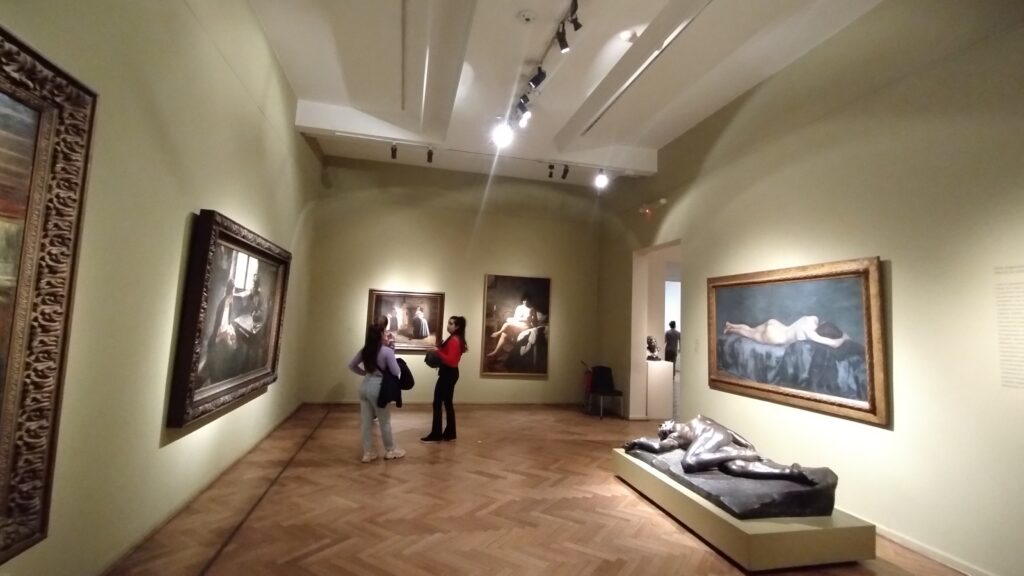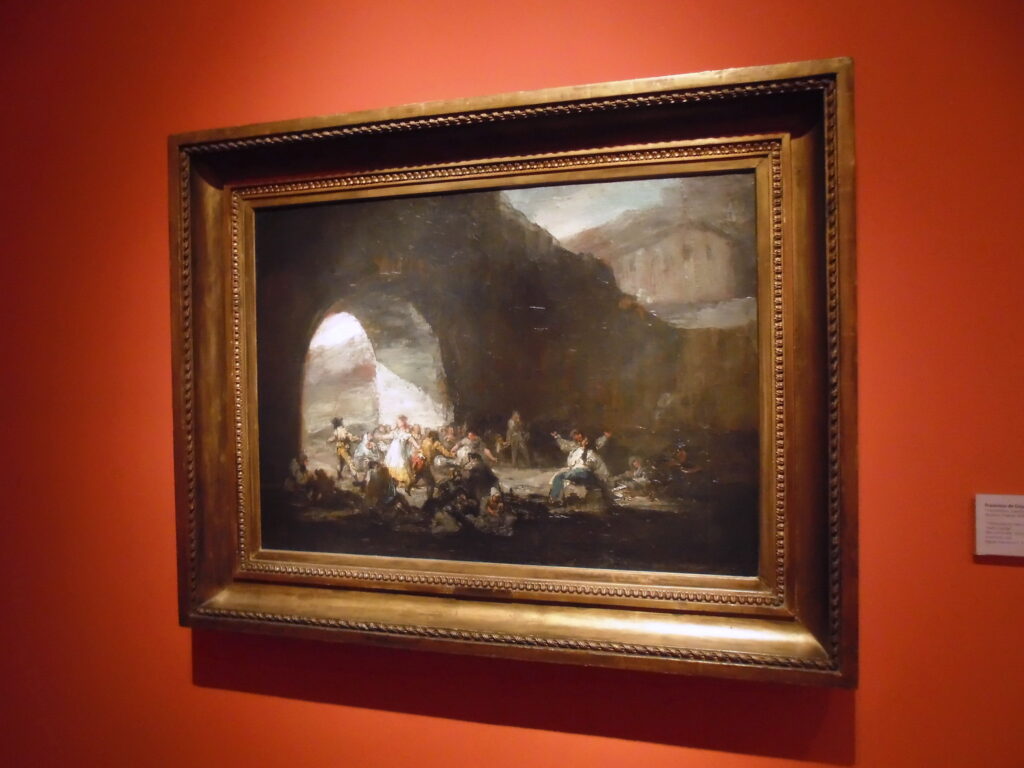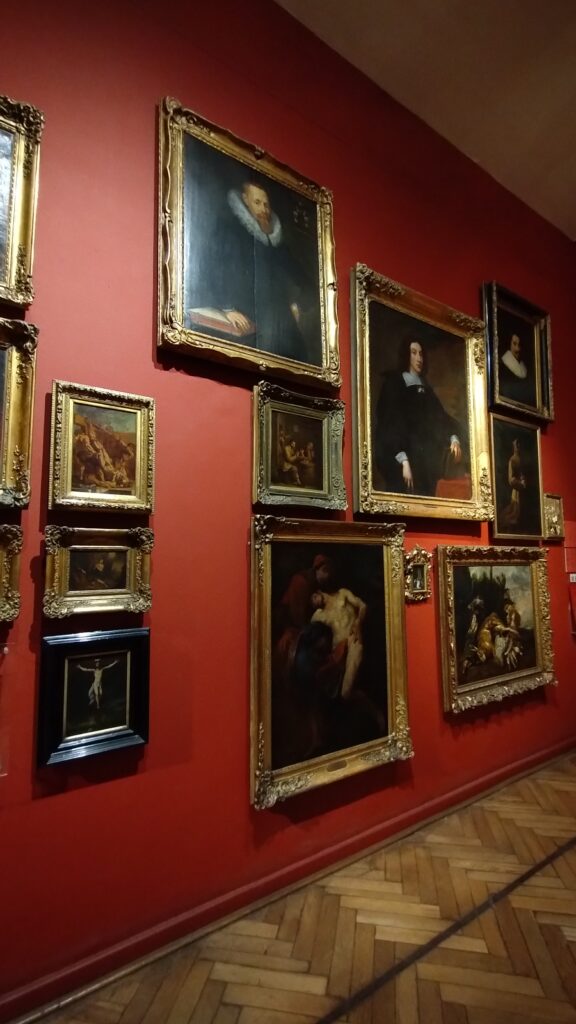The National Museum of Fine Arts in Buenos Aires is one of the most popular places for travelers. No matter your affinity with art or how high it is on your list of interests, visiting the galleries of the National Museum of Fine Arts is an unmissable experience.
More than 12 thousand collections are in the hands of the National Museum of Fine Arts of Buenos Aires, with incalculable value for humanity. The Museum functions as a guardian of these treasures and offers you the opportunity to appreciate first-hand the art, history and culture of both Argentina and the world.
Here we will explain what the National Museum of Fine Arts is, where it is located and what you can do there. As a preview: admission is free and open.
National Museum of Fine Arts (Buenos Aires): Everything You Need to Know Before Your Visit
What is the National Museum of Fine Arts of Buenos Aires?
The National Museum of Fine Arts, known as Museo Nacional de Bellas Artes, is a prominent Argentine art museum situated in the Recoleta neighborhood of Buenos Aires. Established in 1896, it initially opened in the Bon Marché building on Florida Street, now known as Galerías Pacífico.
The museum was founded to house international art from various historical periods and to promote and consolidate emerging Argentine art. In 2004, the museum expanded with a branch in Neuquén.

A Rich History of Growth and Expansion
By 1910, during the Centenary of the May Revolution, the museum’s collection included works by Francisco de Goya, Joaquín Sorolla y Bastida, Edgar Degas, and Pierre-Auguste Renoir.
In 1911, a second venue opened in the Pabellón Argentino, a grand structure initially used at the 1889 Paris Universal Exhibition, later installed in Plaza San Martín. Here, new acquisitions such as Édouard Manet’s “La ninfa sorprendida” and Claude Monet’s “Orillas del Sena” were showcased.
Relocation and Architectural Evolution
In 1933, the museum moved to its current location in the former Recoleta Pump House, redesigned by architect Alejandro Bustillo. This period saw the addition of significant works including Paul Gauguin’s “Mujer del mar,” Vincent van Gogh’s “Le Moulin de la Galette,” and El Greco’s “Jesús en el huerto de los Olivos.”
A Diverse and Comprehensive Collection
The late 20th century brought in modern international art giants like Pablo Picasso, Amedeo Modigliani, Marc Chagall, Vassily Kandinsky, Paul Klee, Lucio Fontana, Jackson Pollock, Mark Rothko, and Henry Moore.
The museum also narrates the story of local art, featuring Argentine artists such as Cándido López, Prilidiano Pueyrredón, Emilio Pettoruti, Xul Solar, Raquel Forner, Grete Stern, Antonio Berni, Alicia Penalba, Gyula Kosice, Marta Minujín, Antonio Seguí, and León Ferrari.
Additionally, it holds a notable collection of Latin American art from artists like Pedro Figari, Joaquín Torres García, Tarsila Do Amaral, Diego Rivera, and Jesús Rafael Soto.
Institutional Mission and Cultural Impact
As a public institution under Argentina’s Secretariat of Culture, the National Museum of Fine Arts aims to safeguard, expand, and manage its artistic heritage while promoting and disseminating the fine arts to ensure collective access to cultural assets.
The museum is marked with the Blue Shield emblem, signifying its compliance with international obligations for protecting cultural property in the event of armed conflict.
Visitor Experience and Practical Information
The museum’s diverse collection includes over 12,000 pieces encompassing paintings, sculptures, drawings, engravings, textiles, and objects from pre-Columbian, colonial, Argentine, and international art, spanning from the 3rd century BC to the present.
This eclectic character is enhanced by significant acquisitions and donations over time. Visitors can explore photography galleries, pre-Columbian Andean art exhibits, two sculpture terraces, and a library housing 150,000 volumes.
An Iconic Landmark in Buenos Aires
Located in the bustling Recoleta district, the National Museum of Fine Arts is not just an art repository but a cultural hub attracting visitors of all ages and social backgrounds from across the globe.
Its impressive 8,800 square meter space features a blend of historical and contemporary art, making it a must-visit destination for art enthusiasts and cultural explorers alike. The museum’s extensive collection and rich history make it a standout institution in Latin America and a treasure trove of Argentine heritage.
Where is the National Museum of Fine Arts of Buenos Aires?
The National Museum of Fine Arts is located in the Recoleta neighborhood, in the northeast part of Buenos Aires. This area is known for its cultural and historical significance, with nearby attractions such as the University of Buenos Aires Law School, the National Library, Recoleta Cemetery, Plaza Francia, and various high-end shops.
Additionally, the area offers ample green spaces and a wide range of dining options. The museum’s entrance is situated at Avenida del Libertador 1473.
How to get to the National Museum of Fine Arts?
There are several convenient transportation options to reach the National Museum of Fine Arts. If you prefer buses, the lines 17, 61, 62, 67, 92, 93, 110, 124, and 130 all stop close to the museum. Alternatively, the subway is a great choice, with the H line stopping at Facultad de Derecho station, just a short walk from the museum.
The museum’s hours of operation are Tuesday to Friday from 11 AM to 8 PM, and on weekends (Saturday and Sunday) from 10 AM to 8 PM. It is closed on Mondays, as well as on May 1st, June 27th, December 24th, 25th, and 31st, and January 1st.
The museum is fully accessible, with ramps and elevators available to reach all floors, along with wheelchairs, accessible restrooms, guide dogs, and guided tours for blind or deaf visitors. Additionally, admission to the museum is free, and an online catalog is available for those who wish to explore the collection virtually.

Things to do and see at the National Museum of Fine Arts in Buenos Aires
Explore the Museum Collections
The National Museum of Fine Arts is renowned globally for the quantity and significance of its collections. It encompasses not just Argentine and Latin American art, but also works by major artists and artistic movements from around the world.
You can explore both digital and physical collections, featuring over 2,500 works. These include high-definition images, texts, audios, and suggested tours. Key collections include:
- Masterpieces
- Argentine Art Collection
- Pop Art
- Experimental Abstraction
- Women Artists
- Impressionism
- Ancient and Asian Art
- Pre-Hispanic and Colonial American Art
- 12th to 18th Century Art
- 19th Century Art
- 20th to 21st Century Art
And many more

Get a first-hand collection of photos and videos
If there is a unique and ideal opportunity to capture photographs and film videos, it is here, at the National Museum of Fine Arts in Buenos Aires. The infinite number of collections that you will find will surprise you, not only for their aesthetic beauty, but also for the symbolic and historical value that you will be able to perceive.
Remember that art has a particular aura, especially when you approach an original and genuine work of art. However, with some good photography and filming, you can take away at least one lasting memory of your experience at the Museo Nacional de Bellas Artes to share and view again and again.
Please note that flash photography and video are not allowed.
Not only art, but also history
Art has always moved in parallel to the history of mankind. At times, anticipating social and political events, and at other times as a kind of criticism of what is happening.
In this sense, the National Museum of Fine Arts offers not only a collection of original works of art and authorship, but also a historical account based on these creations, so that you can observe not only the evolution of art and its techniques, but also what these works try to reflect the world.
Last Considerations
Are you ready to be captivated by over 12,000 collections of paintings, sculptures, and objects at the National Museum of Fine Arts in Buenos Aires?
This remarkable museum welcomes not only art experts and critics but also anyone eager to appreciate the aesthetic beauty and diverse art styles spanning centuries and decades.
As a digital nomad, traveler, or expat, don’t miss the chance to explore this cultural gem that will undoubtedly enhance your Buenos Aires experience. Visit ExpatPathways for more insightful guides and tips to make the most of your journey.


